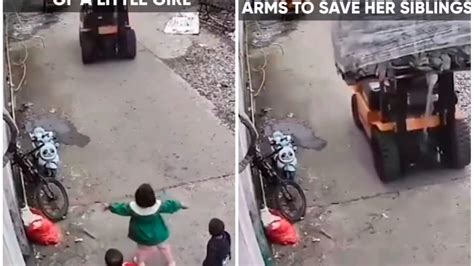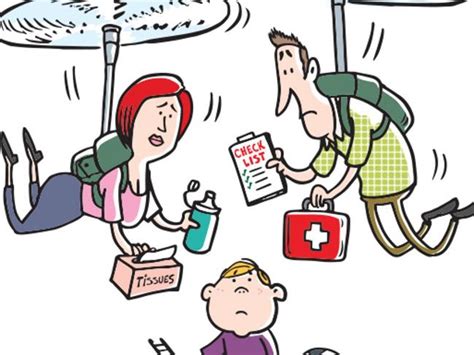
A heartwarming photo of two shelter dog siblings embracing has captured the internet’s attention, highlighting the powerful bond between animals and the urgent need for pet adoption. The picture, featuring dogs identified as grey and white terrier mixes, went viral after being shared by the Humane Society of Northwest Montana, prompting an outpouring of support and adoption inquiries.
The touching image shows the two dogs, a pair of terrier mixes, locked in a tender embrace at the animal shelter in Montana. The Humane Society of Northwest Montana, located in Kalispell, shared the photo on their social media platforms, quickly eliciting an emotional response from animal lovers worldwide. The sheer vulnerability and affection displayed in the photograph underscored the plight of shelter animals and the importance of finding them loving homes.
According to Erin Roush, Community Engagement Manager at the Humane Society of Northwest Montana, the dogs were surrendered to the shelter due to the previous owner experiencing housing issues. “They were surrendered to us because their owner was having housing issues and could no longer care for them,” Roush explained. “They are super sweet dogs, and we are happy to help them find their forever home.” This situation underscores the challenges many pet owners face, often resulting in the difficult decision to surrender their beloved animals to shelters. The shelter emphasized that the siblings have provided each other with significant comfort during this transition.
The image of the hugging dogs spread rapidly across various social media platforms, drawing attention from major news outlets and animal welfare advocates. Users expressed their emotions through comments, shares, and messages of support, emphasizing the need for adoption and responsible pet ownership. Many viewers were deeply moved by the dogs’ evident emotional support for one another, illustrating the depth of animal companionship.
“It’s a reminder that animals have feelings and emotions just like us,” said Roush. “Seeing them comfort each other in a stressful environment like a shelter really pulls at the heartstrings.” This sentiment resonates widely, as people recognize the capacity for emotional connection in animals, further motivating efforts to ensure their well-being.
The viral photo served as a catalyst for numerous adoption inquiries, and the Humane Society of Northwest Montana reported an increase in interest in adopting not just these particular dogs, but other animals in their care as well. This surge in interest reflects the power of visual storytelling and the potential for social media to drive positive change in animal welfare. The shelter staff is carefully reviewing applications to ensure the dogs are placed in the most suitable and loving environment possible.
Moreover, the incident has sparked broader conversations about animal welfare, responsible pet ownership, and the critical role shelters play in the community. Animal advocates hope that the viral attention will lead to increased support for shelters, responsible breeding practices, and accessible resources for pet owners facing challenges. This includes affordable veterinary care, pet food assistance programs, and support services for individuals struggling to keep their pets due to financial or housing constraints.
Beyond the immediate adoption inquiries, the Humane Society of Northwest Montana aims to leverage the viral moment to promote long-term awareness about shelter animals. They are encouraging people to consider adoption as their first option when looking for a pet and to support local shelters through donations, volunteering, and advocacy. Roush added, “We hope this photo inspires others to open their hearts and homes to animals in need.”
The shelter has also emphasized the importance of understanding the commitment involved in pet ownership. They are providing potential adopters with thorough information about the dogs’ temperaments, needs, and medical history to ensure a successful and lasting placement. This responsible approach to adoption aims to reduce the likelihood of animals being returned to the shelter system, ultimately benefiting both the animals and their future owners.
This heartwarming story serves as a potent reminder of the emotional capacity of animals and the importance of providing them with care and compassion. The viral photo of the hugging shelter dog siblings has not only touched hearts but also underscored the significance of adoption and the critical role shelters play in protecting vulnerable animals. The event is expected to have a lasting impact on animal welfare awareness and encourage more people to consider adopting shelter pets.
The surge of attention also presents challenges for the Humane Society of Northwest Montana. The shelter must now manage a large volume of inquiries while ensuring that each potential adopter is thoroughly vetted. They are also working to maintain transparency and communication with the public, keeping them updated on the dogs’ status and the adoption process. This requires significant time and resources, but the shelter is committed to ensuring the best possible outcome for the animals in their care.
Furthermore, the viral nature of the story has prompted other shelters and animal rescue organizations to share similar stories of animal companionship and resilience. This collaborative effort aims to amplify the message about animal welfare and promote adoption across a wider network of shelters. By sharing heartwarming stories and showcasing the unique personalities of shelter animals, these organizations hope to break down stereotypes and encourage more people to consider adoption as a viable option.
The long-term impact of this viral story remains to be seen, but it has undoubtedly sparked a meaningful conversation about animal welfare and the importance of adoption. The Humane Society of Northwest Montana is working diligently to capitalize on this momentum and create lasting change for shelter animals in their community and beyond. Through continued advocacy, education, and community engagement, they hope to build a more compassionate and supportive environment for animals in need.
The shelter is also using this opportunity to educate the public about responsible pet ownership, including the importance of spaying and neutering, providing proper veterinary care, and creating a safe and enriching environment for pets. By promoting these practices, they hope to reduce the number of animals entering the shelter system and ensure that all pets have access to the care and resources they need to thrive.
This viral sensation also brings to light the often-overlooked issue of pet owners facing housing instability. The fact that these dogs were surrendered due to their owner’s housing issues highlights the need for more support and resources for pet owners struggling to maintain their homes. Animal welfare advocates are working to address this issue by advocating for pet-friendly housing policies, providing rental assistance for pet owners, and establishing temporary boarding programs for pets whose owners are experiencing homelessness or other housing crises.
The story of the hugging shelter dog siblings serves as a powerful reminder that animals are sentient beings with complex emotions and needs. By recognizing and respecting these needs, we can create a more humane and compassionate society for all animals. The viral attention this story has garnered offers a unique opportunity to advance animal welfare and ensure that all animals have the chance to live happy, healthy, and fulfilling lives. The Humane Society of Northwest Montana and other animal welfare organizations are committed to seizing this opportunity and working towards a brighter future for animals in need.
Frequently Asked Questions (FAQs)
Q1: Why were the dogs surrendered to the Humane Society of Northwest Montana?
A1: According to Erin Roush, Community Engagement Manager at the Humane Society of Northwest Montana, the dogs were surrendered to the shelter because their previous owner was experiencing housing issues and could no longer care for them.
Q2: What breed are the hugging dogs?
A2: The dogs are described as grey and white terrier mixes.
Q3: What has been the impact of the viral photo of the dogs?
A3: The viral photo has generated significant interest in adoption, with the Humane Society of Northwest Montana reporting an increase in adoption inquiries. It has also sparked broader conversations about animal welfare, responsible pet ownership, and the importance of supporting local shelters.
Q4: What is the Humane Society of Northwest Montana doing to ensure the dogs are placed in suitable homes?
A4: The shelter is carefully reviewing adoption applications to ensure the dogs are placed in the most suitable and loving environment possible. They are also providing potential adopters with thorough information about the dogs’ temperaments, needs, and medical history to ensure a successful and lasting placement.
Q5: How can people help the Humane Society of Northwest Montana and other animal shelters?
A5: People can help by considering adoption as their first option when looking for a pet, supporting local shelters through donations, volunteering their time, and advocating for responsible pet ownership and animal welfare policies.
Extended Article with In-Depth Analysis and Background Information
The viral sensation surrounding the hugging shelter dog siblings at the Humane Society of Northwest Montana represents more than just a fleeting moment of internet fame. It’s a poignant illustration of the deep emotional connections animals are capable of forming, the pervasive challenges faced by animal shelters, and the powerful role social media can play in driving positive social change. This story provides a valuable opportunity to delve deeper into these aspects, exploring the nuances of animal behavior, the complexities of shelter operations, and the potential for broader societal impact.
Animal Behavior and Emotional Capacity
The image of the two terrier mixes embracing resonated so strongly with viewers because it tapped into a fundamental human understanding of comfort and companionship. It challenged the notion that animals are purely instinct-driven creatures, highlighting their capacity for empathy, affection, and emotional support. While scientific research on animal emotions is ongoing, there is a growing body of evidence suggesting that many animals, including dogs, experience a range of emotions similar to those felt by humans.
Studies have shown that dogs can recognize and respond to human emotions, exhibit signs of grief and separation anxiety, and form strong bonds with their caregivers. The display of affection between the shelter dog siblings further supports the idea that animals can provide each other with emotional support, especially during times of stress and uncertainty. This ability to form strong social bonds is crucial for their well-being and survival.
In the context of a shelter environment, where animals are often exposed to unfamiliar surroundings, loud noises, and a lack of personal attention, the presence of a familiar companion can be particularly comforting. The hugging behavior observed in the terrier mixes likely served as a way for them to reduce anxiety, alleviate stress, and maintain a sense of security amidst the chaos of the shelter. This highlights the importance of considering the emotional needs of animals in shelters and providing them with opportunities for social interaction and enrichment.
Challenges Faced by Animal Shelters
The fact that these dogs ended up in a shelter in the first place underscores the numerous challenges faced by animal welfare organizations. Shelters are often overcrowded, underfunded, and understaffed, making it difficult to provide the optimal level of care for the animals in their charge. They rely heavily on donations, volunteers, and the dedication of their staff to keep their doors open and provide essential services.
One of the biggest challenges facing shelters is the sheer number of animals that enter their care each year. This influx is often driven by factors such as irresponsible breeding practices, economic hardship, housing restrictions, and a lack of awareness about the responsibilities of pet ownership. As a result, shelters are constantly struggling to find homes for the animals in their care and prevent overcrowding.
In addition to providing basic necessities such as food, shelter, and medical care, shelters also play a crucial role in reuniting lost pets with their owners, investigating animal cruelty cases, and educating the public about responsible pet ownership. These services are essential for protecting animal welfare and promoting a more humane society.
The story of the hugging shelter dog siblings also highlights the often-overlooked issue of pet owners facing housing instability. The fact that these dogs were surrendered due to their owner’s housing issues underscores the need for more support and resources for pet owners struggling to maintain their homes. This includes advocating for pet-friendly housing policies, providing rental assistance for pet owners, and establishing temporary boarding programs for pets whose owners are experiencing homelessness or other housing crises.
The Power of Social Media in Animal Welfare
The viral success of the photo of the hugging shelter dog siblings demonstrates the immense power of social media to raise awareness about animal welfare issues and drive positive change. Social media platforms provide a powerful tool for shelters to connect with potential adopters, promote their animals, and share heartwarming stories that resonate with a wide audience.
In this case, the simple act of sharing a touching photo on social media resulted in a surge of adoption inquiries and increased attention to the Humane Society of Northwest Montana. This underscores the potential for social media to amplify the voices of animal welfare organizations and mobilize support for their mission.
However, it’s also important to recognize the potential pitfalls of relying solely on social media for animal welfare advocacy. While viral stories can generate a lot of attention, they are often fleeting and may not translate into long-term support. It’s crucial for shelters to leverage these moments of attention to build sustainable relationships with their supporters and develop comprehensive communication strategies that extend beyond viral trends.
Furthermore, social media can also be a breeding ground for misinformation and negativity. It’s important for shelters to be proactive in addressing false claims and combating negative stereotypes about shelter animals. By providing accurate information and sharing positive stories, they can help to create a more informed and compassionate online environment.
Beyond Adoption: Fostering a Compassionate Community
While finding homes for shelter animals is a primary goal, it’s also essential to foster a broader sense of compassion and responsibility towards animals in the community. This includes promoting responsible pet ownership, advocating for animal-friendly policies, and supporting initiatives that improve the lives of animals in need.
Responsible pet ownership encompasses a range of practices, including spaying and neutering, providing proper veterinary care, ensuring adequate nutrition and exercise, and creating a safe and enriching environment for pets. By educating the public about these practices, shelters can help to reduce the number of animals entering the shelter system and promote the well-being of pets in the community.
Advocating for animal-friendly policies involves working with local governments to enact laws that protect animal welfare, such as anti-cruelty laws, leash laws, and regulations on breeding and pet sales. By engaging in advocacy efforts, shelters can help to create a more humane and just society for animals.
Supporting initiatives that improve the lives of animals in need includes donating to animal welfare organizations, volunteering time at shelters, and participating in community events that promote animal welfare. By working together, individuals and organizations can create a more compassionate and supportive environment for animals in need.
The Lasting Impact of a Viral Moment
The story of the hugging shelter dog siblings at the Humane Society of Northwest Montana serves as a powerful reminder of the emotional capacity of animals and the importance of providing them with care and compassion. The viral attention this story has garnered offers a unique opportunity to advance animal welfare and ensure that all animals have the chance to live happy, healthy, and fulfilling lives.
While the immediate impact of the viral moment has been a surge in adoption inquiries and increased awareness of the Humane Society of Northwest Montana, the long-term impact will depend on the organization’s ability to leverage this attention to build sustainable relationships with its supporters and advance its mission. By continuing to share heartwarming stories, promote responsible pet ownership, and advocate for animal-friendly policies, the Humane Society of Northwest Montana can create a lasting legacy of compassion and advocacy for animals in need.
Furthermore, the story of the hugging shelter dog siblings can serve as an inspiration for other animal welfare organizations to embrace social media as a tool for raising awareness, mobilizing support, and promoting their mission. By sharing their own stories and engaging with their communities online, shelters can help to create a more informed and compassionate online environment and inspire others to take action on behalf of animals in need.
In conclusion, the viral sensation surrounding the hugging shelter dog siblings represents more than just a fleeting moment of internet fame. It’s a poignant illustration of the deep emotional connections animals are capable of forming, the pervasive challenges faced by animal shelters, and the powerful role social media can play in driving positive social change. By recognizing and addressing these aspects, we can create a more humane and compassionate society for all animals.
Expanded FAQs:
Q1: Besides housing issues, what are some other common reasons why pets are surrendered to shelters?
A1: Besides housing issues, other common reasons for pet surrenders include:
- Financial constraints: Owners may struggle to afford pet food, veterinary care, or other essential expenses.
- Behavioral problems: Unresolved behavioral issues can lead owners to believe they are unable to manage the pet.
- Lack of time: Changes in lifestyle, such as new jobs or family obligations, can leave owners with insufficient time to care for their pets.
- Allergies: Development of allergies within the household can force owners to make the difficult decision to surrender their pet.
- Moving: Some rental properties or new homes may have restrictions on pet ownership.
- Owner illness or death: Owners may become unable to care for their pets due to illness, injury, or death.
- Unplanned litters: Failure to spay or neuter pets can result in unwanted litters, which can overwhelm owners.
Q2: What are the specific steps involved in the adoption process at the Humane Society of Northwest Montana?
A2: While specifics might vary, the typical adoption process includes:
- Application: Potential adopters must complete an adoption application, providing information about their lifestyle, experience with pets, and the type of home they can provide.
- Interview: Shelter staff conduct interviews to assess the applicant’s suitability and answer any questions.
- Meet-and-Greet: If the application is approved, potential adopters have the opportunity to meet the animal and interact with them.
- Home Visit: Some shelters conduct home visits to ensure the environment is safe and appropriate for the animal.
- Adoption Fee: A fee is typically charged to cover some of the shelter’s costs, such as vaccinations, spaying/neutering, and microchipping.
- Adoption Contract: Adopters sign a contract agreeing to provide proper care for the animal and adhere to shelter policies.
- Follow-Up: The shelter may follow up with adopters to ensure the transition is going smoothly and offer support.
Q3: What are some of the long-term benefits of adopting a shelter animal instead of buying from a breeder?
A3: Adopting a shelter animal offers several long-term benefits:
- Saving a life: Adoption gives a deserving animal a second chance at a loving home.
- Reducing pet overpopulation: Adoption helps reduce the demand for commercially bred animals, which can contribute to overpopulation issues.
- Cost savings: Adoption fees are typically lower than the cost of buying from a breeder, and shelter animals often come with initial vaccinations and spaying/neutering included.
- Knowing the animal’s temperament: Shelter staff can often provide information about an animal’s personality and behavior, helping adopters find a good match for their lifestyle.
- Supporting the local community: Adoption supports local animal shelters and their efforts to care for animals in need.
- Discouraging puppy mills: Adopting helps discourage the demand for animals from puppy mills and other unethical breeding operations.
Q4: How can people volunteer at the Humane Society of Northwest Montana or other animal shelters, and what types of activities do volunteers typically perform?
A4: Volunteering opportunities typically include:
- Animal care: Feeding, grooming, and exercising animals.
- Cleaning: Maintaining the cleanliness of kennels and other shelter areas.
- Socialization: Spending time with animals to provide companionship and reduce stress.
- Administrative tasks: Answering phones, filing paperwork, and assisting with fundraising events.
- Foster care: Providing temporary homes for animals who need extra care or are waiting for adoption.
- Event support: Helping with adoption events, fundraisers, and other community outreach activities.
- Marketing and social media: Assisting with website updates, social media posts, and other marketing efforts.
Q5: What resources are available for pet owners who are struggling financially and may be considering surrendering their pets?
A5: Several resources exist to help pet owners facing financial challenges:
- Pet food banks: Organizations that provide free or low-cost pet food to owners in need.
- Veterinary assistance programs: Programs that offer financial assistance for veterinary care.
- Temporary boarding: Programs that provide temporary housing for pets whose owners are experiencing homelessness or other housing crises.
- Rental assistance: Programs that help pet owners afford pet-friendly housing.
- Non-profit organizations: Many animal welfare organizations offer resources and support to pet owners in need.
- Online resources: Websites and online communities provide information and support for pet owners facing financial challenges. Examples include the Humane Society, ASPCA, and local animal shelters’ websites.
By exploring these aspects in greater depth, the story of the hugging shelter dog siblings becomes more than just a heartwarming tale. It becomes a powerful catalyst for raising awareness, promoting responsible pet ownership, and supporting the vital work of animal shelters in our communities.









